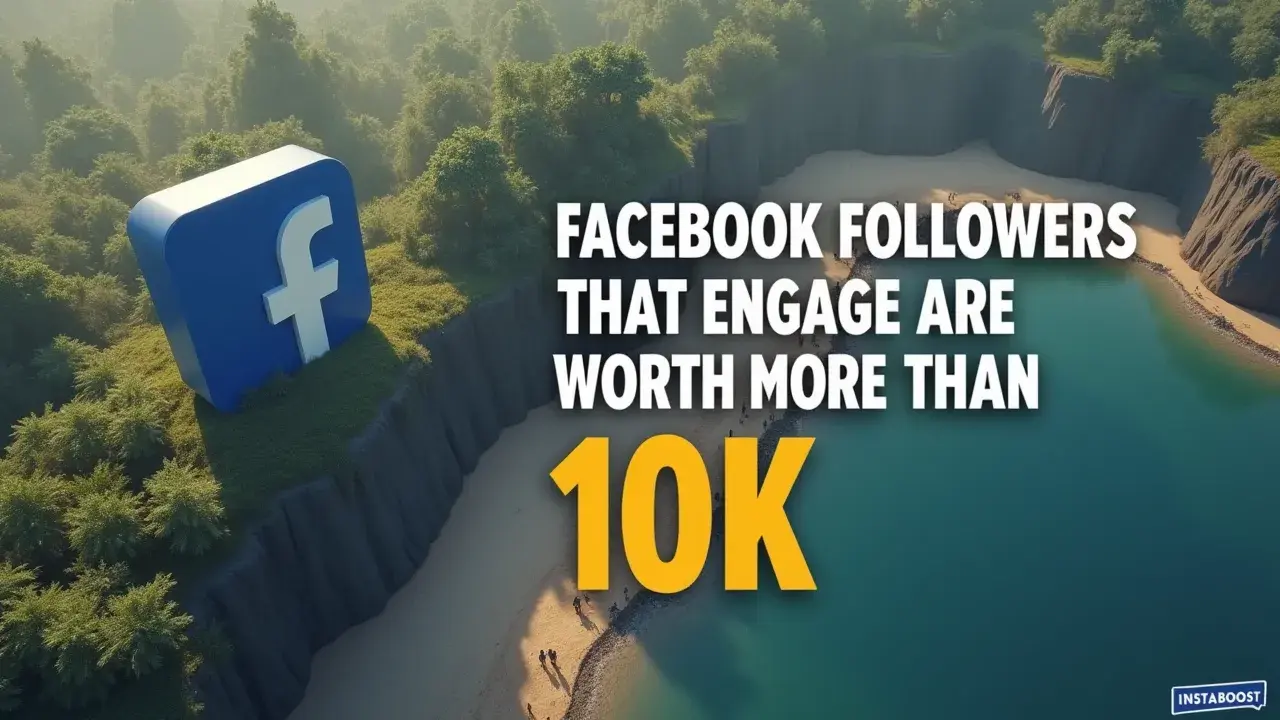Are Engaged Facebook Followers More Valuable Than 10k?
Engaged Facebook followers typically deliver greater impact than a large but inactive audience. Active interaction signals real interest, increases visibility through comments and reactions, and strengthens community feedback loops. When followers consistently participate, content reach and relevance improve beyond what raw follower numbers suggest. Prioritize cultivating meaningful interactions to ensure audience size aligns with genuine influence and outcomes.
Why 10.000 Followers Isn’t the Goal – Real Engagement Is
Scroll through Facebook for a bit and you start to notice something odd. Some pages have huge follower counts, but their posts get barely any comments. Then there are smaller pages, just a few hundred followers, but the comments sections are busy – people talking, responding to the person running the page, going back and forth.
That big number at the top looks impressive, but it doesn’t always line up with what’s actually happening. What seems to matter more is whether people are really paying attention – sharing posts, commenting, showing up on live videos. Facebook cares more about those small signs of involvement than just how many people hit follow ages ago.
When people join in or stick around for your live stuff, it helps your posts reach more folks, and you get a better idea of who’s actually out there. Sometimes, just having a handful of people who genuinely care can grow your audience on Facebook in ways the big number can’t.
When people join in or stick around for your live stuff, it helps your posts reach more folks, and you get a better idea of who’s actually out there. Sometimes, just having a handful of people who genuinely care can grow your audience on Facebook in ways the big number can’t.
If most people are quiet, even a big page feels empty. But when the people you have actually care, things seem to spread farther and the conversations start to feel a bit more real. So instead of focusing on the follower count, it’s probably worth thinking about whether the ones who are already there are interested in what you’re sharing. The ones who reply or share something back – those are the people who seem to matter more than just another number.

Trust Fuels Authentic Engagement
Trust isn’t something you announce; it’s something that shows up over time, usually in small ways. When you look through a Facebook page and see people tagging friends, asking questions about a product, or responding to each other in the comments, it’s a sign they feel comfortable there. That’s what separates a page full of silent followers from one where people actually participate, even if the numbers are smaller. Real engagement comes from being present – answering people when they reach out, remembering a regular’s name, or responding to feedback with care instead of canned answers. It’s not about posting the most perfect photo or a headline meant to grab attention for a second.
It’s about building credibility, slow and steady, through actual conversations. People join in when they believe someone will notice or remember what they say. So, the real measure isn’t how many followers are listed, but whether people feel like they belong and their voices matter.
Good Facebook Live hosts pay attention to this; they don’t just talk to a camera, they look for ways to respond to people by name or pick up on a question that comes up in the chat. And curiously, when people trust they’ll be seen, that’s often when pages start to attract more group followers almost effortlessly. That’s how a page grows in a way that lasts – not by trying to chase viral moments, but by focusing on the relationships that form in the comments and replies.
Over time, this kind of trust leads to people recommending your page to others, standing up for your brand if there’s a complaint, and maybe even choosing your business over another, whether you’re running social media for a small bakery or a larger brand like INSTABOOST. In the end, it’s this kind of steady, honest engagement that really matters – more than follower counts or milestones – because it’s what actually turns someone watching on the sidelines into someone who wants to stick around.
Crafting Engagement-First Strategies That Actually Work
It’s easy to get caught up in numbers and overlook the fact that there are actual people looking at your posts. Sure, algorithms and analytics tell you what’s working on paper, but on Facebook, genuine back-and-forth matters a lot more. If you’re focused only on collecting followers, you might end up with a list of names that rarely say anything – a big group that doesn’t do much.
But if you take the time to notice what your audience is interested in, what they’re hoping to find, or the kinds of problems they’re trying to solve, you start to see better conversations and people actually responding. With Facebook Live, this is especially clear. People don’t tune in because they want to be part of an audience; they want to be part of a conversation, to know you’re listening if they comment or ask something. Answering questions as they come up, saying hello when someone new joins, or following up on feedback – these are small things, but they make people feel seen.
Even subtle cues, like the way people boost social proof on Facebook, play a part in building that sense of community. Over time, it’s this kind of steady attention that changes things. Not some sudden growth hack, but a space where people end up wanting to stick around because it feels comfortable, familiar, maybe even a little bit theirs.















